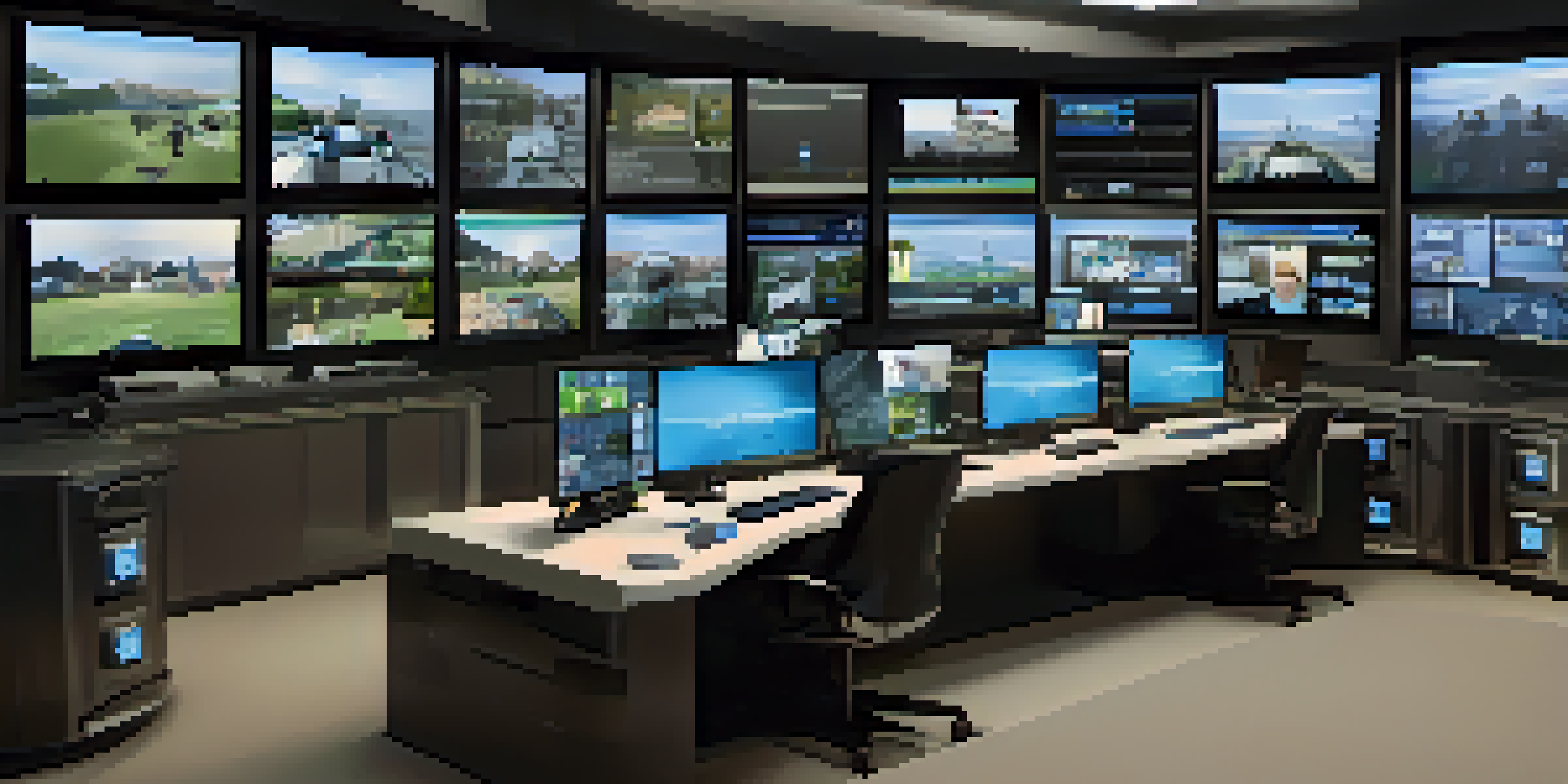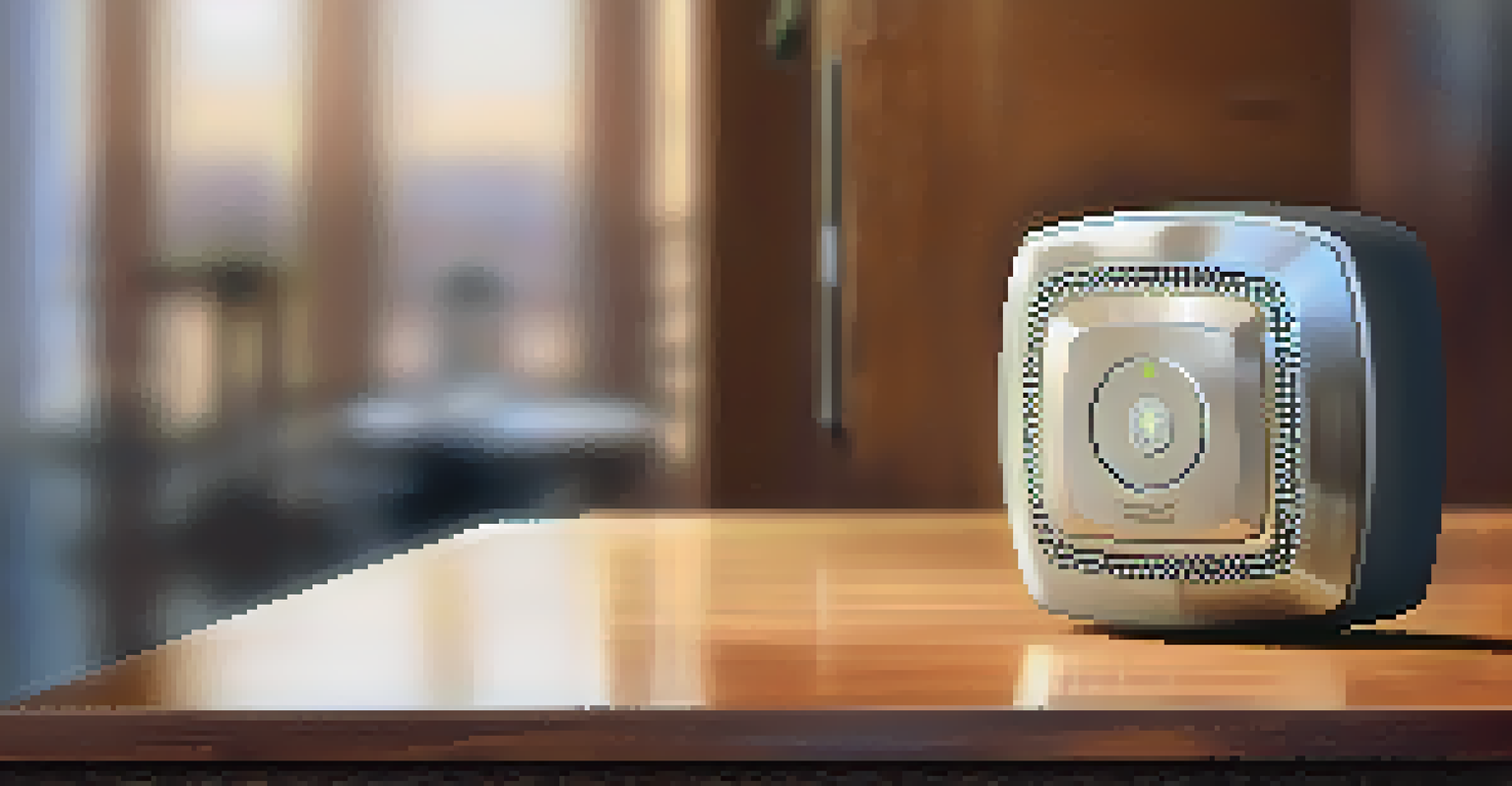How to Set Up a Home Security Command Center

Understanding the Importance of a Security Command Center
A home security command center acts as the brain of your security system. It centralizes information from various devices, making it easier to monitor your home's safety. Think of it as the control room where all crucial data converges, ensuring you're always informed.
The best way to predict the future is to create it.
With the rise of smart home technology, having a dedicated space for security management is more important than ever. This command center allows you to stay in control, whether you're home or away. It gives you peace of mind, knowing that you can respond quickly to any situation.
Moreover, it simplifies the interaction with your security devices. Instead of fiddling with multiple apps or systems, a well-organized command center streamlines your experience. It empowers you to manage everything efficiently, making your home feel safer.
Choosing the Right Location for Your Command Center
Selecting the perfect spot for your command center is crucial for its effectiveness. Ideally, it should be a central area in your home where you can easily access all security devices. Think of a quiet corner in your living room or a dedicated space in your home office.

Consider factors like visibility and accessibility when choosing the location. You want to ensure that you can monitor your home's security from this spot without distractions. A well-placed command center allows you to keep an eye on multiple screens or devices simultaneously.
Centralize Security Management
A home security command center centralizes information from various devices, making it easier to monitor and respond to your home's safety.
Additionally, ensure the area has reliable internet connectivity, as most security systems rely on the web. A strong Wi-Fi signal will ensure your devices function seamlessly. Remember, the right location can significantly enhance your security response time.
Gathering Essential Equipment for Your Command Center
Now that you have a location, it's time to gather the necessary equipment. Start with a powerful computer or tablet that can run your security software smoothly. This device will serve as your main hub for monitoring feeds and alerts from your security systems.
Security is not a product, but a process.
Next, consider adding multiple screens if you have a larger setup. This allows you to view different camera angles or security alerts simultaneously. Having a multi-monitor setup creates a more efficient and organized workspace, similar to what you'd find in a professional security office.
Don’t forget about backup systems, such as an uninterruptible power supply (UPS). This ensures that your command center remains operational during power outages, keeping your home secure no matter what. A little foresight can go a long way in maintaining your home's safety.
Integrating Smart Security Devices into Your Setup
To maximize your command center's effectiveness, integrate smart security devices. Cameras, motion detectors, and smart locks can all be connected to your central hub. This creates a cohesive system that communicates seamlessly, ensuring no detail is overlooked.
For instance, you might install smart cameras that send real-time alerts to your command center. This allows you to respond immediately to any unusual activity. Additionally, smart locks enable remote access, letting you secure your home from anywhere.
Choose the Right Setup Location
Selecting a central and accessible location for your command center enhances its effectiveness and improves your ability to monitor security.
Consider using security software that supports a wide range of devices. This ensures compatibility and allows for easy updates as new technology emerges. Integrating these devices not only enhances security but also adds convenience to your daily life.
Setting Up User-Friendly Security Software
Choosing the right security software is vital for your command center. Look for user-friendly interfaces that allow easy navigation among different features. A well-designed application can make monitoring your home feel effortless.
Many software options offer customizable dashboards, letting you prioritize what information you want to see first. This personalization helps streamline your security checks, making them more efficient. Think of it as arranging your workspace to make tasks easier to tackle.
Additionally, ensure that the software provides real-time alerts and notifications. This keeps you informed of any potential threats or issues, allowing you to respond quickly. An effective software solution can make all the difference in maintaining your home's safety.
Establishing a Monitoring Routine for Your Security Center
Once your command center is set up, it's important to establish a monitoring routine. Regularly check your security feeds and alerts to stay on top of any changes in your home’s security status. Think of it as your daily safety check-in, just like you would with your car or health.
Create a schedule that works for you, whether it's checking in multiple times a day or conducting thorough reviews weekly. This consistency helps ensure that nothing slips through the cracks. Plus, it builds a habit that reinforces the importance of security.
Integrate Smart Devices Seamlessly
Integrating smart security devices into your command center creates a cohesive system that enhances both security and convenience.
Additionally, encourage other household members to participate in the monitoring process. This fosters a sense of shared responsibility for home safety. A united approach not only enhances security but also strengthens family bonds.
Testing and Upgrading Your Home Security Systems
Regular testing of your security systems is essential to ensure they function properly. Schedule periodic checks for devices like cameras and alarms to confirm they’re in working order. Think of it as routine maintenance for your home’s safety net.
Upgrading your systems as technology evolves is just as important. New features and improvements can enhance your command center's functionality, keeping you ahead of potential threats. Staying informed about the latest security technologies can empower you to make smarter choices.

Lastly, don't hesitate to seek professional assistance for upgrades or repairs. Sometimes, an expert touch can make all the difference in optimizing your security setup. Remember, investing in your home security is investing in your peace of mind.
Conclusion: Your Command Center is Your Security Backbone
In conclusion, setting up a home security command center is a proactive step towards safeguarding your loved ones and property. With the right location, equipment, and systems in place, you create a robust safety net that empowers you to respond to any situation. It's not just about technology; it's about building a secure environment.
Regular monitoring and testing reinforce your command center’s effectiveness, helping you stay ahead of potential threats. Remember, a well-maintained system can significantly reduce response time in emergencies, making your home a safer place. Your command center is the backbone of your security strategy.
Ultimately, take pride in your command center as a symbol of safety and control. Every step you take towards enhancing your home security contributes to a more resilient and secure living space. Embrace the power of a well-organized command center, and enjoy the peace of mind it brings.